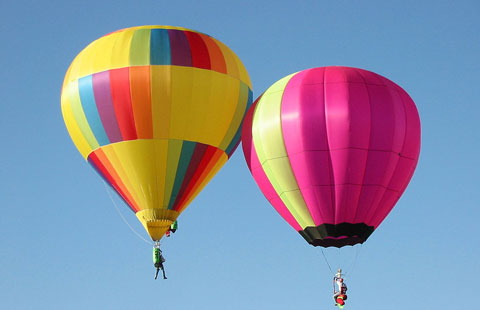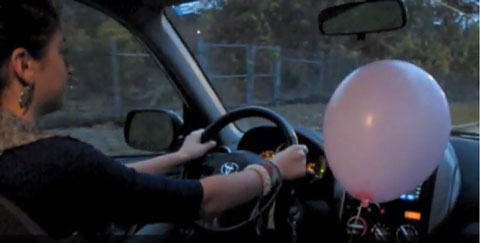Balloon Acceleration in a Car
For a lot of people, the unusual behavior of a helium balloon is the first indisputably tangible evidence that there’s more to the world than meets the eye. So pack up the car, head to the party store, and let’s explore the properties of buoyancy and pressure with this fun experiment!

Image Credit: Rescher via Wikimedia Commons
What You Need
- A helium balloon
- A car or other enclosed vehicle
What to Do
1. With the helium balloon in the car, drive to an empty stretch of road or parking lot.
2. Accelerate quickly. Don’t break the speed limit, but get up to it as fast as you feel comfortable. Note the g-force you feel as you accelerate, and observe what the balloon does.
3. Brake quickly. Again, note the forces you feel. What do you notice about the motion of the balloon?

Image Credit: Screengrab from Tessa Ricci's video
What's Going On?
Balloons float upward due to buoyancy, the same force that lets objects like wood float on fluids like water. A good way to picture what’s happening is to imagine the air molecules bouncing off the balloon from all sides. Since the air pressure is highest close to the ground, there are more molecules of air hitting the balloon from below than from above, which pushes it upward when you’re at a standstill.
When you accelerate in your car, the force you feel pressing you back into the seat comes from your inertia; in reality, the seat is pressing forward into you, and accelerating you along with the car. When you step on the gas, a similar thing happens to the air; the air inside the car tries to stay put while the frame of the vehicle moves forward around it. Like you, the molecules of air in the car feel that backwards “push”—only they don’t have the seat to stop them from flying backward.
While you’re accelerating, you create what’s called a density gradient; the air pressure is highest at the back of the vehicle, and decreases moving forward. When you brake, the situation is reversed; the air inside the vehicle wants to keep moving, so it all piles up at the front. Thanks to this density gradient, a helium balloon will experience a force opposite to what we feel in an accelerating or decelerating vehicle.
For another explanation of this experiment, check out our related "Ask a Physicist" question.
Apply It!
Gases and liquids are both fluids, meaning they can flow and take the shape of their containers. The primary difference is compressibility; the molecules in a gas can get closer together, while the ones in a liquid can’t. Would this experiment work under water?
-Stephen Skolnick














